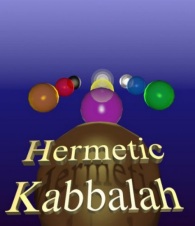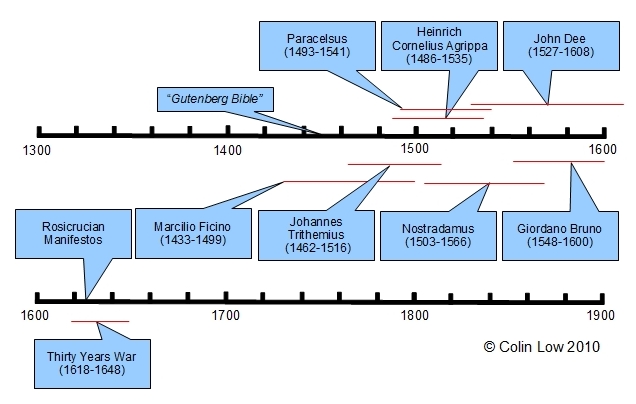
|
|
|
Renaissance Theurgy While magic has flourished at all times and places, theurgy has not, although it may appear similar to or even indistinguishable from magic in its materials, tools, and practices. Some times theurgy is called "high magic" in an attempt to distance it from commonplace demon-conjuring, black pacts, necromancy and other goetic activities, but this tends to provoke fruitless typological discussions about magic without defining what is distinctive about theurgy. Theurgy means "God-work". Theurgy occurs in conjuction with a philosophical (or theosophical) outlook that provides its rationale. It may look like magic, and it may smell like magic, but it is different. An eloquent justification of theurgy can be found in the surviving writings of the Neoplatonist philosopher Iamblichus (~ 245-325 CE). Iamblichus proposed that the soul was so completely descended into the body that it required a 'jolt' to awaken it. This jolt was provided by exposure to the presiding powers of the Kosmos, which could be invoked by means of magical ritual. The Neoplatonists were much derided in the 19th century for this practical approach to philosophy. Even at the time Iamblichus was taken to task by Porphyry for "forcing the gods" in the manner of a magician who forces the daimones to do his will using ritual, fumigations, secret names of power, and ritual artifacts. Iamblichus argued that the gods were not 'forced', they acted out of love. The goal of Iamblichan theurgy was the elevation or ascent of the soul, with an ultimate goal of unification with the divine. Implicit in the practice of theurgy is an esoteric psychology (literally, "knowledge of the soul") that accords the human soul an agency, dignity and divinity that depends less on external factors, such as grace, faith or good works, and more on self-knowledge. While it is difficult to detail all the assumptions on which theurgy depends, it is certainly consistent with the belief that the human soul is a fragment of the divine that has "fallen" into a relationship with the external and so forgotten its original nature and status. The soul is constituted like a hologram so that, as a fragment of a whole, it retains all the essential relationships found in the whole - that is, the soul is a "little kosmos" or microcosm. Because it reflects or mirrors the relationships of the Kosmos, it is part of the larger web of "sympathies", and manipulation of these sympathies by the use of perfumes, flowers, stones, diagrams, divine names, music and poetry can arouse the corresponding elements within the soul. The Italian Renaissance saw a renewed interest in ancient knowlege, justified by the belief that Judaism, Christianity and Hellenistic philosophy had an ancient primal source; they were "saying the same thing", and so would throw light on the origins of Christianity. That ancient source was believed to be Thoth-Hermes the Thrice Great, Hermes Trimegistus. There was renewed debate about "good" or spiritual magic, and "bad" or demonic magic. As Walker (see below) makes clear, there was a good deal more talk than practice, and those who asserted the legitimacy of spiritual magic were very much on the defensive. Leading or notable figures from this period are:
See Also:Spiritual and Demonic Magic: from Ficino to Campanella, D.P. WalkerGiordano Bruno and the Hermetic Tradition, Francis A. Yates Eros and Magic in the Renaissance, Ioan P. Culianu Giordano Bruno and the Kabbalah, Karen Silvia de Leon-Jones Return to Historical Background |